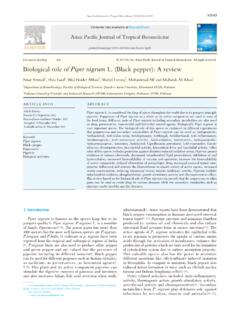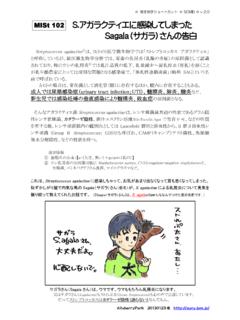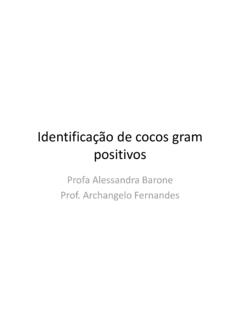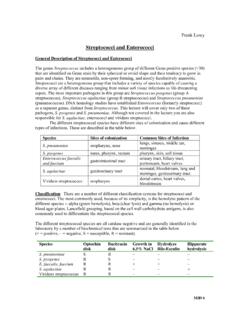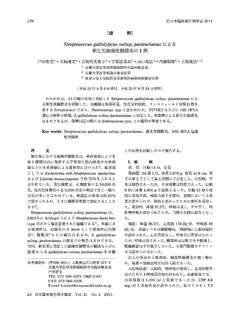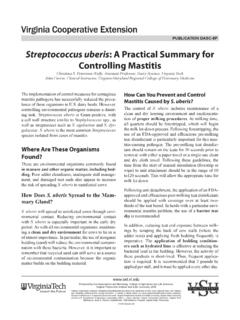Transcription of Product Description CITRICIDAL - Natural Ingredient
1 Product DescriptionCITRICIDAL is a broad spectrum antimicrobial compoundsynthesized from the seeds and pulp of is an extremely potent and effective broadspectrum bactericide, fungicide, antiviral and antiparasiticcompound. CITRICIDAL is environmentally safe with alow toxicity to man and of ActivityStudies indicate that the antimicrobial activity ofCITRICIDAL is in the cytoplasmic membrane where theuptake of amino acids is prevented and disorganizationof the cytoplasmic membrane and leakage of low mo-lecular weight cellular is biodegradable according to the "Stan-dard Test Methods for Determining the Anaerobic Bio-degradation Potential of Organic Chemicals", ASTMS tandards, Section 11, Water and Environmental Tech-nology, Procedure E 1196-2, pp. 879-901, : Bactericide and fungicide in both pre-harvest andpost-harvest treatment - range: 50 ppm to 250 ppm*Fish & Poultry: Disinfectant for fresh fish and poultry, preser-vative for processed fish and poultry - range: 100 ppm to 1000ppm*Animal Feed: Mold inhibitor and antiparasitic - range: 50 ppmto 250 ppm*Food: Preservative and antioxidant- range: 10 ppm to 250ppm*Cosmetics: Preservative and antimicrobial - range: 1000 ppmto 10,000 ppmWater Treatment: Disinfectant for contaminated water -range: 50 ppm to 250 ppm*Therapeutic: - range: 50 to 200 mg/dose*Physical PropertiesChemical Description : Diphenol hydroxybenzene complexAppearance (liquid): Liquid/heavy viscousColor (Gardner): 2, Lemon YellowOdor: Mild citrusSpecific Gravity (d25 C): ( ): (d25 C): - Point ( F): 292 Viscosity (Centistoke): Weight: 565 Solubility.
2 Water, alcohol and organic solvents*International registrations onlyCitricidal Liquid ExtractGrapefruit ExtractivesGlycerin-USPTo ta lCitricidal Powder ExtractGrapefruit ExtractivesSilicon Dioxide - USPG lycerin-USPTo ta lCITRICIDALCITRICIDAL60%40%100%50%30%20% 100%CITRICIDALCITRICIDALA cute Oral Toxicity LD50 over 5,000 mg/kg of live weightChronic Toxicity(Acute oral with continuous feedingand reproduction study for 24 months) LD50 2,500 mg/kg of live weight (Rats and guinea pigs)Acute Oral Toxicity(Continuous feeding studywith fishmeal for 12months)LD50 5,000 mg/kg of live body weight (Adult rats, 12months)LD50 400 mg/kg of live weight (Newborn rats)Dermal ToxicityNot a primary skin irritant and is non-corrosiveCarcinogenicity12 month tests in mice show no carcinogenic effect24 month test in rats show no carcinogenic effectLong-Term Inhalation StudyClosed chamber exposure for 8 hours a day, 5 days a weekfor 90 days - No effect at 100-150 mg/m3 airDermal Toxicity Carcinogenicity2 year studies with rats and mice.
3 No carcinogenic, toxicityor systemic effects seenEye IrritationFull strength - severe irritation with slight corneal iris ,1% and 2% concentrations produce irritation andmoderate erythemaHuman Patch Studies1 % and 2% concentrations produced no irritation orsensitization. 3% concentration produced very mildirritation by allergic PropertiesCitricidal ToxicityTest ResultsThe following analytical results illustrate that CITRICIDAL can have a broadand efficacious range of applications, offering superior performance comparedwith commonly used antimicrobial agents, while fulfilling standard performancecriteria. The following information is representative of additional test results,including safety data, which are available upon request from Potency of Anti-Microbial AgentsThe Minimum Inhibitory Concentration Study is a microbiological assay usedto evaluate the relative potency of CITRICIDAL compared to other antimicro-bial agents. This study demonstrates CITRICIDAL to be a minimum of ten(10X) to one hundred times (100X) more effective than other agents testedagainst the organisms used in this Results continuedUSP Preservative Challenge TestThe USP Preservative Challenge test evaluates the ability of aproduct to withstand microbial insult.
4 It is designed to determinewhether the Product is protected from microorganisms, which wouldalter the quality and integrity of a finished formulation. This studydemonstrates that CITRICIDAL is as effective as methylparabenin meeting the requirements of the USP Preservative EffectivenessTest. It also demonstrates that CITRICIDAL has a more rapidonset of activity in reducing the concentration of viable organisms.(Please note: CITRICIDAL is cationic.)Number of Days020406080100%IodineChlorine Bleach SolutionSilver Oxide SuspensionCitricidalEscherichia coliStreptococcus faeciumSalmonella typhiStaphylococcus aureusCandida AlbicansPercent of InhibitionCITRICIDAL Packaging SpecificationsLiquid Extract5 Gallon Plastic Pail11" x 14 1/2" x 16"Net wt. 50 wt. 55 Gallon Plastic Drum 23 1/2" x 36"Net wt. 500 wt. 550 lbsPowder Extract30 Gallon Fiber Drum16 x 29 Net wt. 110 wt. 120 lbsCITRICIDAL (as a Natural extractive) is listed as GRAS (Generally Recognized as Safe) underthe Code of Federal Regulations as 21 CFR CITRICIDAL has been tested for safety inboth human and animals, including the environment.
5 CITRICIDAL is considered non-toxic and anon-irritant at dilutions up to 2%. CITRICIDAL is also considered NO.: 90045-43-5 CTFA listing: Grapefruit ExtractNote: CITRICIDAL should be handled with care in full strength. Avoid contact with the eyes andavoid breathing vapors at full strength. Any direct contact with the skin should be thoroughlyrinsed with Results (Continued)CITRICIDALCITRICIDALB iodegradability Assessment of CITRICIDAL The biodegradability of CITRICIDAL Liquid is established by the Standard Test Methods for Determining the Anaerobic BiodegradationPotential of Organic Chemicals , ASTM Standards, Section II, Waterand Environmental Technology, Procedure E 1196-2, pp 879-901,1993. CITRICIDAL has an inhibitious effect on carbon dioxide pro-duction in an anaerobic digestion system for the first four weeks. Atthe end of eight weeks, gas production reached the theoretical maxi-mum demonstrating that CITRICIDAL is biodegradable using ac-cepted testing test results available upon Minimum Inhibitory Concentration In-Vitro (MIC)
6 Aerobacter aerogenesAlcalingenes faecalisBrucella intermediaBrucella abortusBrucella melitensisBrucella suisCloaca cloacaeEscherichia coliEscherichia coliEscherichia coliHaemophilus influenzaeKlebsiella edwardsiiKlebsiella aerogenesKlebseilla pneumoniaeLegionella pneumoniaeLoefflerella malleiLoefflerella pseudomalleiMoraxella duplexMoraxella glucidolyticaNeisseria catarrhalisPseudomonas capaciaPasteurella septicaPasteurella pseudotuberculosisProteus vulgarisProteus mirabilisPseudomonas aeruginosaPseudomonas aeruginosaPseudomonas fluorescensSalmonella choleraesuisSalmonella enteritidisSalmonella gallinarumSalmonella typhimuriumSalmonella typhiSalmonella paratyphi ASalmonella paratyphi BSalmonella pullorumSerratia marcescensShigella flexneriShigella sonneiShigella dysenteriaeVibrio choleraeVibrio bacteria Origin & strain No. MIC (ppm)41382268155869663900172428172435296 7410230362294883131999120554755571083845 3223176912081927240224984572020002222626 6660666200620266605000220026200020,00020 0050650666662000632200200 Aspergillus nigerAspergillus fumigatusCandida albicansCandida albicansEpidermophyton floccosumKeratinomyces ajelloiMonilia albicansSaccharomyces cerevisiaeTrichophyton mentagrophytesTrichophyton rubrumTrichophyton tonsuransFungi and Yeasts Origin & strain No.
7 MIC (ppm)ATCCATCCAATCCATCCAATCCAA62759197102 591022795336002006060200200106020200200 Bacillus subtilisbacillus megatheriumbacillus cereusbacillus cereus var. mycoidesClostridium botulinumClostridium tetaniCorynebacterium acnesCorynebacterium diphtheriaeCorynebacterium diphtheriaeCorynebacterium diphtheriaeCorynebacterium minutissiumDiplococcus pneumoniaeLactobacillus arabinosusLactobacillus arabinosusLactobacillus caseiListeria monocytogenesMycobacterium tuberculosisMycobacterium smegmatisMycobacterium phleiSarcina luteaSarcina ureaeStaphylococcus aureasStaphylococcus aureasStaphylococcus aureasStaphylococcus aureasStaphylococcus aureasStaphylococcus aureasStaphylococcus albusStaphylococcus albusStreptococcus agalactiaeStreptococcus haemoyticus AStreptococcus faecalisStreptococcus faecalisStreptococcus pyogenesStreptococcus bacteria Origin & Strain No. MIC (ppm)Additional OrganismsGiardia lambliaEntamoeba histolyticaChlamydia trachomatisHerpes simplex virus type 1 Influenza A2 virusHelicobacter pyloriCampylobacter jejuniThe data presented herein is based on experiments andinformation believed to be accurate and reliable.
8 How-ever, no warranty is made, either expressed or implied,regarding the accuracy of the results to be obtained fromthe use of such date. Bio/Chem Research will assume noresponsibility for the results of performance in productsand applications over which Bio/chem Research has nocontrol.


